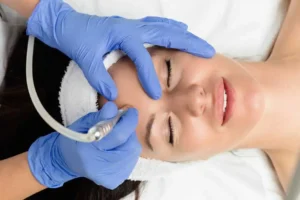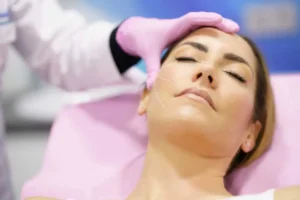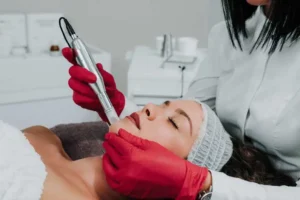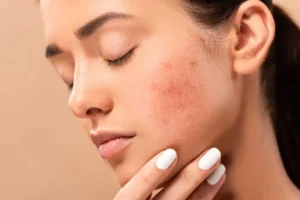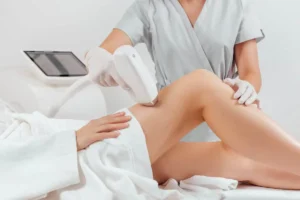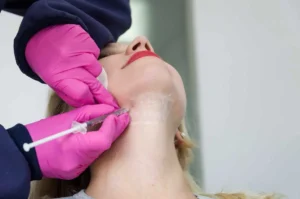
Table of Contents
In recent years, microneedling has gained popularity as an effective treatment for skin rejuvenation, offering a range of benefits, from reducing the appearance of scars to improving skin texture. This blog will explore the science behind microneedling, how it works, and why it’s an effective treatment for many skin concerns. Whether you’re seeking a solution for acne scars, wrinkles, or overall skin tone improvement, microneedling might be the answer you’re looking for. Let’s dive into how this treatment works and why it’s worth considering.
What is Microneedling?
Microneedling, or collagen induction therapy, is a minimally invasive procedure involving tiny, sterilized needles to puncture the skin’s surface. This process creates micro-injuries that trigger the body’s natural wound-healing response, which, in turn, stimulates collagen and elastin production. These two proteins keep skin firm, smooth, and youthful-looking.
Why Microneedling is Effective for Various Skin Concerns
Microneedling can address various skin concerns, making it a versatile treatment option. Some of the most common reasons people seek microneedling include:
Reducing the Appearance of Scars
Scars can significantly impact a person’s self-confidence, whether from acne, surgery, or injury. Microneedling breaks down old scar tissue and stimulates the production of new collagen, which helps smooth and even out the skin’s surface.
Minimizing Fine Lines and Wrinkles
Microneedling’s anti-aging properties are a significant draw for consumers. Fine lines and wrinkles appear because collagen production declines typically with aging. By increasing collagen production, microneedling plumps the skin and lessens the appearance of these aging symptoms.
Improving Skin Tone and Texture
Uneven skin tone, hyperpigmentation, and rough texture are common skin concerns that microneedling can improve. By encouraging cell turnover and collagen production, microneedling helps create a smoother, more even complexion.
Reducing Stretch Marks
Microneedling isn’t just for the face—many people also use it to reduce the appearance of stretch marks on areas like the stomach, thighs, and hips. Like it treats scars, microneedling breaks down the fibrous tissue in stretch marks and stimulates new collagen to smooth the skin.
Microneedling vs. Other Skin Treatments
Many skin rejuvenation treatments are available today, from chemical peels to laser resurfacing. So, why choose microneedling?
Less Invasive than Laser Treatments
While treatments like laser hair removal and resurfacing can be highly effective for specific concerns, they can also require more prolonged recovery. They may not be suitable for all skin types. On the other hand, microneedling is a more accessible choice for a broader spectrum of people due to its reduced invasiveness and reduced likelihood of side effects.
Safe for All Skin Types
Microneedling can be used on all skin kinds and tones without increasing the risk of pigmentation problems, in contrast to specific laser treatments that might not be suitable for those with darker skin tones. Because of this, it’s a fantastic option for people who might not be a good fit for more intensive therapies.
Natural Results
One of the biggest benefits of micro needling is that it stimulates the body’s natural healing processes. Unlike injecting foreign materials, microneedling promotes the development of collagen and elastin in the skin, producing long-lasting and natural-looking effects.
What to Expect During and After a Microneedling Session
If you’re considering microneedling, you might wonder what the treatment entails. Here’s a breakdown of what to expect before, during, and after a typical session.
Consultation and Preparation
You will see a doctor before your first session to determine if microneedling is the best action for your skin issues. After evaluating your skin, they can suggest treatments for the best outcomes.
Your skin will be cleaned on the day of your visit, and to help you feel as comfortable as possible throughout the process, a topical numbing lotion may be used.
The Microneedling Procedure
The duration of the micro-needling process varies from 30 to 60 minutes, depending on the area under consideration. Micro-injuries are made on the skin by stroking it with a handheld device that contains microscopic needles. Instead of experiencing agony, the majority of people report only minor discomfort.
Post-Treatment Care
After treatment, your skin may look red and puffy, like a mild sunburn. Usually, these side effects go away in 24 to 48 hours. Your provider will provide detailed instructions for aftercare, which may include avoiding direct sunlight, cleansing with a mild cleanser, and using a moisturizing serum.
To help your skin heal properly, it’s also crucial to refrain from using harsh skincare products or cosmetics for the first 24 hours following treatment.
How Often Should You Get Microneedling?
Microneedling is not a one-time therapy for most patients. Typically, a course of treatments is advised to achieve the best outcomes. Your skin’s state and particular objectives will determine how frequently you need treatments.
Treatment Frequency
For general skin rejuvenation, patients may need three to six treatments about four weeks apart. More sessions may be required to treat more severe concerns, such as deep acne scars or stretch marks.
Maintenance Treatments
After you’ve achieved your desired results, maintenance treatments are recommended every six to twelve months to continue stimulating collagen production and keep your skin looking its best.
Addressing Common Concerns About Microneedling
As with any cosmetic procedure, having questions or concerns is natural. Below, we address some of the patients’ most common questions about microneedling.
Is Microneedling Painful?
Even though microneedling requires making tiny punctures in the skin, most patients experience minimal pain—especially when using a topical numbing ointment. The feeling is frequently likened to a slight tingling or scratching.
How Long Does Recovery Take?
Recovery time is minimal compared to more invasive procedures. Most patients experience redness and slight swelling for 24 to 48 hours after treatment. For some, the skin may flake or feel dry as it heals, but these effects are usually mild and short-lived.
Are There Any Risks?
When performed by a trained professional, microneedling is a safe procedure. However, as with any treatment, there are potential risks, including infection or prolonged redness. To minimize these risks, following all post-treatment care instructions is crucial.
Conclusion: Is Microneedling Right for You?
Microneedling is an excellent option for anyone looking to improve their skin’s texture, reduce scars, or minimize the appearance of wrinkles. By stimulating the body’s natural healing processes, microneedling offers long-lasting results with minimal downtime.
If you’re ready to experience the benefits of microneedling or learn more about how it can help with your skin concerns, don’t hesitate to book an appointment for microneedling treatment at The Skin Refinery.
